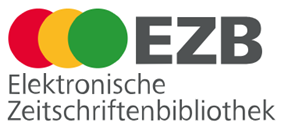Detection and Host Range Study of Virus Associated with Pepper Yellow Leaf Curl Disease
Abstract
High incidence of Pepper yellow leaf curl virus (PepYLCV) was observed in Indonesia since early 2000. Disease incidence in Yogyakarta, Central and West Java reached 100% on Capsicum frutescens, but only 10-35% on C. annuum. As an exception, the disease incidence on C. annuum cv. TM 999 was in the range of 70-100%. The causal agent of the disease, PepYLCV, was detected by polymerase chain reaction. Viral specific DNA fragment of the size ~1600 bp and ~550 bp was amplified from infected plants using two pairs of geminivirus universal primers pAL1v1978/pAL1c715, and pAv494/pAc1048, respectively. The PepYLCV has an intermediate host range including plants belonging to the family of Solanaceae, Leguminosae, and Compositae. The species belonging to the families of Cucurbitaceae, Malvaceae, Chenopodiaceae, and Amaranthaceae were resistant to the virus. Physalis floridana, is very prospective as a propagation host for the geminivirus infecting pepper. Nicotiana spp., cucumber, watermelon, cotton, and Sida sp. could be used as a differential host. Besides, Capsicum frutescens cv. Cakra, tomato, N. benthamiana, N. glutinosa, and Ageratum conyzoides could be used as indicator plants for the geminivirus infecting pepper.Key words: Pepper yellow leaf curl virus, disease incidence, host range
Downloads
HAYATI J Biosci is an open access journal and the article's license is CC-BY-NC. This license lets others distribute, remix, tweak, and build upon author's work, as long as they credit the original creation. Authors retain copyright and grant the journal/publisher non exclusive publishing rights with the work simultaneously licensed under a https://creativecommons.org/


















.png) IPB University
IPB University Department of Biology
Department of Biology The Indonesian Biological Society
The Indonesian Biological Society 

